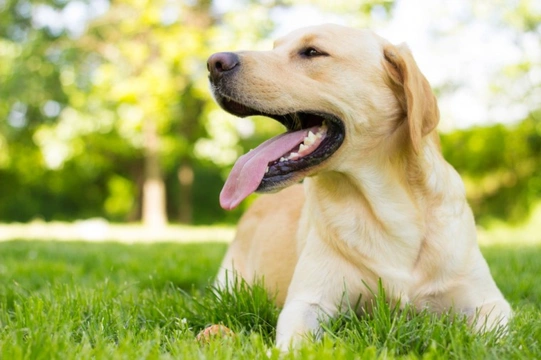
Four ways grass seeds can pose a hazard to your dog
Grass seeds might seem small and innocuous, but these tiny little seeds that are prolific during hayfever season can cause some real problems for dogs, as they can work their way under the skin and even into the body with relative ease.
It is important to check your dog over for grass seeds in their coat after you’ve been out for a walk, and to comb and brush your dog regularly and pick out any seeds and burs that are present before they get the chance to become a problem.
This article will explain four ways in which grass seeds can pose a hazard to your dog, and also explain what types of dogs are most likely to run into problems with grass seeds, and why. Read on to learn more.
Grass seeds can work their way under the skin of the body
You might not really know what a grass seed looks like if you think about it, and when we think of seeds generically we usually think of things like apple pips and the types of seeds we plant to grow flowers from and so on. Grass seeds can be rather larger than many people think, with around 1cm long not being at all uncommon, and they have a sharp spiky end as well as a fibrous surface, so they’re not smooth to the touch, and can actually piece the skin.
Grass seeds can easily brush off onto your dog’s fur when they’re out on their walk, and the fibrous surface of them means that they tend to cling to the coat, particularly in dogs with rough or curly fur, but less so in breeds with short, straight fur like the Staffordshire bull terrier.
When caught in the fur, they can work their way down to the skin, and the sharper end of the grass seed is actually spiky enough to pierce your dog’s skin – and if it does, it might well just get brushed off their fur later on and cause no further issues. However, it is not unheard of for the whole grass seed to work its way under the skin and cause inflammation and irritation, which will appear as a painful lump that will require veterinary treatment to investigate and remove.
They can lodge between your dog’s claw and claw sheath
One of the more common ways in which grass seeds can be a problem for dogs is that they are the right shape and size, with that mentioned pointy end, to get lodged between your dog’s claw and claw sheath.
Think about your own fingernails, where the nail meets the nail bed – this is what we mean by this, it is the point where your dog’s claw itself meets with the sheath it grows from. The spiky end of a grass seed can wedge itself in here and this itself can be enough to really irritate your dog’s foot, but once there, the grass seed can also work its way fully under the claw sheath, where it will form a sore, angry lump that will very much bother your dog, but that will no longer be obvious as a grass seed.
This will be painful and very irritating for your dog.
They can work their way into your dog’s ear canal
Grass seeds that catch on your dog’s coat can also catch on their ears, particularly in dog breeds with dropped ears with thick feathering like the Springer spaniel. Outside of the ear on the fur itself they aren’t likely to be any more of an issue than potentially causing matting and a knot, but they can also from there work into your dog’s ear canal and inner ear, and be very irritating for your dog as well as increasing the risk of your dog developing an ear infection.
Grass seeds can get in your dog’s eye
Getting something in your eye is very annoying regardless of what it is or how it happens, and because grass seeds have a rough, irritating surface, they will not only be very painful and annoying for your dog if they end up in their eye, but can actually scratch the cornea too.
If the grass seed gets lodged under the eyelid (upper or lower) you won’t be able to see the cause of the problem, but your dog will show clear signs of distress and discomfort and spend a lot of time pawing at their eye to try to remove the debris.
Dogs with feathered feet and ears are more likely to pick up grass seeds
These types of problems with grass seeds for dogs are all common, and most veterinary clinics will treat a few such cases of each of them every single year. Any dog can suffer from these types of issues, but they tend to occur more commonly in dogs with dense fur and feathering, particularly around the ears and toes, like the aforementioned Springer spaniel.



